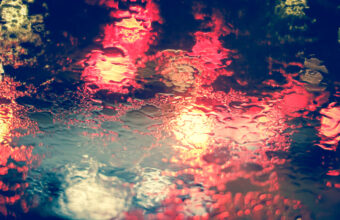In the quest for cooler interiors and enhanced comfort during those blazing summer months, selecting the right window tint is crucial. Not all window tints are created equal, especially when it comes to their ability to reduce heat. Let’s explore the top contenders in the market known for their superior heat rejection properties, ensuring you make an informed decision for your vehicle.
Ceramic Window Tint
Top Pick for Heat Reduction
- Heat Rejection – Ceramic window tints stand out for their exceptional ability to block infrared rays, the primary culprit behind heat buildup inside your vehicle. By rejecting up to 90% of infrared light, ceramic tints can significantly reduce interior temperatures.
- UV Protection – Beyond heat control, ceramic tints offer excellent protection against harmful UV rays, shielding the vehicle’s interior and occupants from sun damage.
- Clarity – Unlike some other tinting materials, ceramic tints do not contain metals, ensuring any interference with electronic devices and maintaining crystal-clear visibility.
- Durability – Ceramic tints are highly durable and resistant to fading, ensuring long-lasting performance without the color change that affects some other tint types.
Carbon Window Tint
Runner-Up with Added Aesthetic Appeal
- Heat Rejection – Carbon window tints are another excellent choice for reducing heat, capable of blocking a substantial amount of infrared light. Their heat rejection capabilities are slightly lower than ceramic but still highly effective.
- UV Protection – These tints also provide strong protection against UV rays, contributing to interior preservation and occupant protection.
- Unique Look – Carbon tints offer a matte-finish look that many vehicle owners find aesthetically pleasing, adding to the vehicle’s overall appearance.
- No Fading – The color of carbon tint is stable over time, not prone to fading like dyed tints, ensuring a lasting aesthetic appeal.
Metallic Window Tint
Good Heat Rejection with a Reflective Finish
- Heat and Glare Reduction – Metallic tints incorporate tiny metallic particles that reflect heat and sunlight, offering good heat reduction and glare control.
- Signal Interference – One drawback is the potential for these metallic elements to interfere with cell phone, GPS, and radio signals.
- Reflective Appearance – Some drivers prefer the shiny appearance of metallic tints, though it’s worth noting this can vary based on personal and legal considerations.
Dyed Window Tint
Budget-Friendly Option with Limited Heat Control
- Heat Reduction – While dyed window tints can absorb some heat, their performance in heat reduction is significantly lower than ceramic, carbon, or metallic tints.
- Fading Over Time – Dyed tints are prone to fading and may require more frequent replacement to maintain effectiveness and appearance.
For superior heat rejection, ceramic window tints are the best choice, offering unparalleled performance in reducing interior temperatures, blocking UV rays, and ensuring durability without compromising visibility or electronic device functionality. Carbon tints follow closely, providing excellent heat reduction with an appealing matte finish. When selecting a window tint, consider not only heat reduction capabilities but also longevity, clarity, and potential impact on electronic devices to find the best fit for your needs and lifestyle. Consulting with a professional tinting service can provide tailored recommendations and ensure your tint complies with local regulations.






